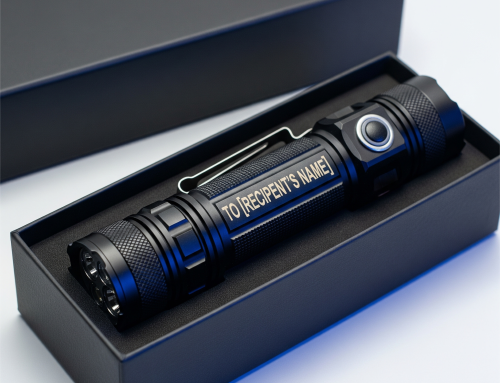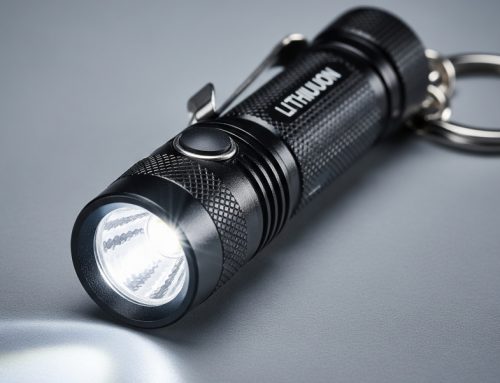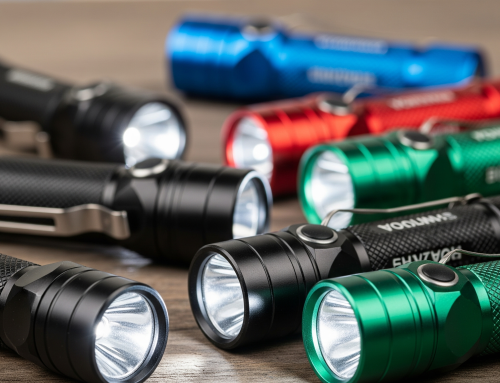In forensic investigations, every detail can be crucial to solving a crime. Investigators rely on various tools to uncover hidden evidence, and UV flashlights have become an indispensable device in modern criminal investigations. This article explores how UV flashlights are used in forensic science, aiding in the detection of bodily fluids, trace evidence, and other critical clues that are invisible under normal lighting.
Table of Contents
ToggleWhat is UV Light and How Does it Assist in Forensics?
Ultraviolet (UV) light falls outside the visible spectrum, with wavelengths shorter than visible light but longer than X-rays. UV light can cause certain substances to fluoresce or emit visible light when exposed to it, revealing hidden evidence that would otherwise remain undetectable under standard lighting conditions.
UV flashlights emit a specific wavelength of UV light, typically around 365nm to 395nm, which makes them highly effective tools in crime scene investigations. The ability to detect substances like blood, semen, and other bodily fluids, as well as trace evidence, makes UV flashlights a valuable tool in the forensic toolkit.
Key Forensic Applications of UV Flashlights
1. Detecting Bodily Fluids at Crime Scenes
One of the most critical uses of UV flashlights in forensic investigations is detecting bodily fluids such as blood, semen, saliva, and urine. These fluids are often left at crime scenes and can provide vital DNA evidence to link a suspect to the crime. However, these fluids are often invisible to the naked eye, especially when they’ve been cleaned or when they are found in low-light conditions.
UV flashlights help to uncover these hidden fluids. When exposed to UV light, substances like blood and semen can fluoresce, making them visible and allowing investigators to collect samples for further analysis. The ability to detect blood stains, even after they have been cleaned or hidden, is a critical advantage for forensic investigators.
2. Identifying Trace Evidence and Fibers
In addition to bodily fluids, UV flashlights are effective in detecting trace evidence such as fibers, hair, and other small particles that may have been left behind at a crime scene. These materials often cannot be seen with the naked eye, especially if they blend in with the surrounding surfaces.
Using a UV flashlight can cause certain fibers and materials to fluoresce, revealing their presence. This is particularly important in cases of burglary, assault, or sexual assault, where small pieces of evidence such as hair or fabric fibers can play a crucial role in identifying the perpetrator.
3. Examining Documents and Counterfeit Detection
UV flashlights are also used to examine documents for authenticity and to detect hidden markings or alterations. In cases of fraud, money laundering, or identity theft, UV light can reveal invisible ink, watermarks, or other security features that are not visible under normal lighting conditions. Forensic experts often use UV flashlights to inspect documents for tampering or for signs of counterfeiting.
Forensic investigators can use UV flashlights to examine checks, credit cards, passports, and other official documents for security features that are specifically designed to fluoresce under UV light. This allows them to confirm the authenticity of documents and identify potential forgeries.
4. Investigating Fingerprints
UV light can also play a role in the detection of latent fingerprints, especially when traditional fingerprint powder and techniques are not sufficient. While fingerprints are often found using traditional methods, UV flashlights can enhance the detection of latent prints that are not visible under regular lighting conditions.
Certain fingerprint powders and chemical treatments, such as those used for developing prints on dark or non-porous surfaces, may fluoresce under UV light. This makes it easier for forensic investigators to identify fingerprints on surfaces like glass, metal, or plastic that might be difficult to analyze using standard techniques.
5. Investigating Gunshot Residue and Explosives
Gunshot residue (GSR) can be difficult to detect with the naked eye, but UV flashlights can aid in identifying the presence of gunpowder or explosive residues. These substances sometimes fluoresce under UV light, allowing forensic experts to collect samples for analysis. The ability to quickly identify GSR can be crucial in investigations involving shootings or bombings.
Similarly, UV light can help detect residues from explosives. In certain cases, explosives or chemical traces left at a crime scene may emit a fluorescent glow when exposed to UV light, providing further leads in an investigation.
Why UV Flashlights Are Crucial in Forensic Investigations
1. Non-Invasive Detection
One of the key benefits of using UV flashlights in forensic investigations is that they offer a non-invasive method for detecting hidden evidence. Unlike traditional methods that may require chemical treatments, sampling, or physically altering the crime scene, UV flashlights simply illuminate potential clues, allowing investigators to gather information without disturbing the scene.
2. High Sensitivity and Accuracy
UV flashlights are highly sensitive to specific substances, allowing forensic experts to detect even the smallest traces of evidence. The fluorescent effect produced by bodily fluids, fibers, or other trace evidence ensures that these clues are visible, even when they are present in tiny amounts or in hard-to-see locations.
3. Portable and Easy to Use
UV flashlights are lightweight, portable, and easy to carry, making them ideal tools for forensic investigators who need to examine crime scenes, vehicles, or other locations in different environments. They can be used in a variety of lighting conditions, including dimly lit areas, ensuring that investigators can always access the right tools to perform thorough examinations.
4. Time Efficiency
In forensic investigations, time is often of the essence. The quick detection of hidden evidence, such as bodily fluids or trace materials, can significantly shorten the investigation process and improve the overall efficiency of crime scene analysis. UV flashlights allow investigators to quickly assess the scene and collect important evidence before it is contaminated or lost.
Choosing the Right UV Flashlight for Forensic Use
When selecting a UV flashlight for forensic purposes, it’s important to consider the following factors:
- Wavelength: UV flashlights typically emit light within the range of 365nm to 395nm. A flashlight with a wavelength around 365nm is particularly effective for detecting bodily fluids and other materials that fluoresce strongly under this spectrum.
- Light Intensity: High-intensity UV flashlights are preferred for forensic work, as they provide a stronger, more focused beam, enhancing the visibility of fluorescence at crime scenes.
- Portability: A compact, lightweight design is essential for forensic professionals who need to carry their equipment from one location to another.
- Durability: Given the challenging environments in which UV flashlights are used, it is important to select a flashlight that is durable, shock-resistant, and weatherproof.
Why Tank007 UV Flashlights Are Perfect for Forensic Investigations
At Tank007, we offer a range of high-quality UV flashlights that are perfect for forensic use. Our flashlights are designed to provide:
- Precise and Reliable Illumination: With specific wavelengths tailored for forensic needs, Tank007 UV flashlights offer reliable, clear illumination to detect hidden evidence.
- Durability and Portability: Built to withstand tough environments, our flashlights are both durable and lightweight, ensuring easy transport and use in a variety of situations.
- High Intensity: Our UV flashlights provide high light intensity for maximum fluorescence, making them ideal for crime scene analysis and evidence detection.
Explore our collection of UV flashlights today at Tank007.com and discover how they can help enhance your forensic investigations, providing critical insights and ensuring thorough analysis at crime scenes. With Tank007, uncover the hidden evidence that could make all the difference in solving the case.



